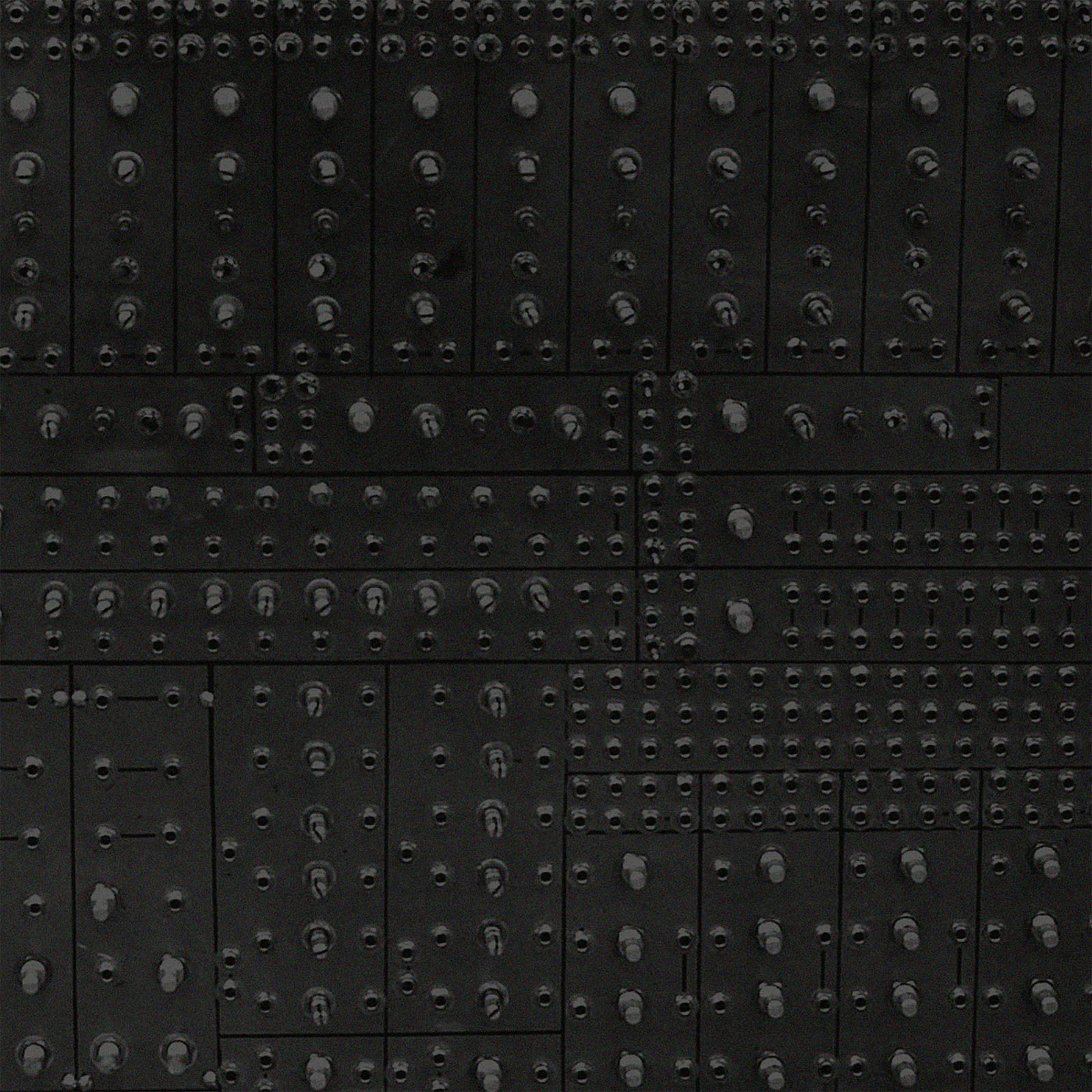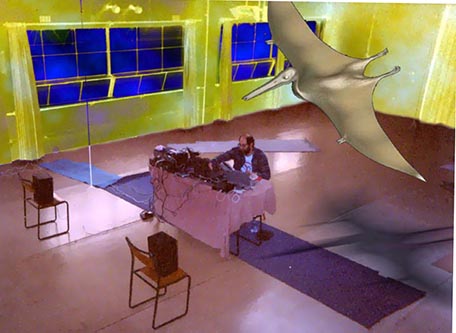
Warren Burt is a composer, performer, video artist, sound poet, writer, instrument maker (both in hardware and software, electronic and acoustic) and above all a pioneer who started to study modular synthesis back in 1969 at the State University of New York at Albany, with Joel Chadabe, and recorded these 2 compositions on a Buchla 100 in 1972.
At the time the pieces for our session were composed Ron Robboy wrote :
“Warren Burt is consumed with process. Give the man a procedure, and he will find a piece or two or – let’s be honest – ten embedded in it. And for many years now, he has been fascinated by tuning systems as raw material. Another, perhaps less obvious, yet still indelible quality, a sort of core identity of Warren’s music and sensibility, began to assert itself to me from the beginnings of my acquaintance with him and his work.
I think a first manifestation made itself apparent to me in a work he did at University of California – San Diego circa 1971 or 1972. The piece was for Buchla Boxes, as they were called, the classic voltage-controlled synthesizer modules designed by Donald Buchla in the Sixties. The image offered by the engaged modules, with erratic knots of patch cords growing out like thick weeds gone to seed, a harebrained flowchart gone Bad, was inevitably a source of pride to the practitioner. I don’t remember anyone ever bragging about the spareness of a lean patch, though that may just say something about me and the people I hung out with. In the particular piece in question – I haven’t any memory of every knowing its title – Warren moved completely out of the Box, so to speak.
The design principle behind Buchla Modules was that a simple waveform generated by an oscillator would be processed by other modules, e.g., filters, modulators, envelope generators, gates, and so forth. It was the oscillator that oscillated; everything else followed that. Warren, instead, turned to the gates, the modules that by opening or closing governed whether a signal could pass, and took the simple leap of having them open and close so rapidly that the very opening and closing, that alternation, entered the audio spectrum. He had taken analog electronic equipment and made it, the hardware itself, into an acoustic instrument. At the same time, the opening and closing of the gate mimicked the ur-digital principle: on or off, one or zero. His system was simultaneously inhabiting acoustic, analog and digital space.
Was it a particle or a wave? This was analog art par excellence, a musical parody of quantum mechanics. The signal this gate oscillation generated, of course, was hardly a sine wave. The whole system was shaking and vibrating, and one had the sense that everything, from a systemic level on up to nuts and bolts, was operating at the edge of its capacity to maintain cohesion. Structural integrity may be the phrase an engineer would use. The signal was rich and filthy and beautiful, and the harmonics of that complex wave formed the processing grist for his piece.
I loved the work, its funkiness and richness, and I deeply admired how he had moved on from the obvious to find extended techniques for the synthesizer modules just as he might for any acoustic instrument. (He was also by then, or soon to become, a member of the Extended Vocal Techniques Ensemble there at UCSD). Using extended techniques for acoustic instruments was already a commonplace at New Music centers, nearly de rigueur. If a piece could plausibly make the case that its compositional logic demanded a certain level of abuse to an instrument, all the more chic. D The same did not go for electronics, however. In the climate of the time, it was funny to put a cello under water, but not so a circuit board, Jimi Hendrix or The Who and their theatrical destruction of equipment notwithstanding. Warren’s promiscuously democratic impulse was to level those distinctions. His ability to more beyond reverence for Electronic Music, and see simply sound-making instruments, was inspirational to me.”
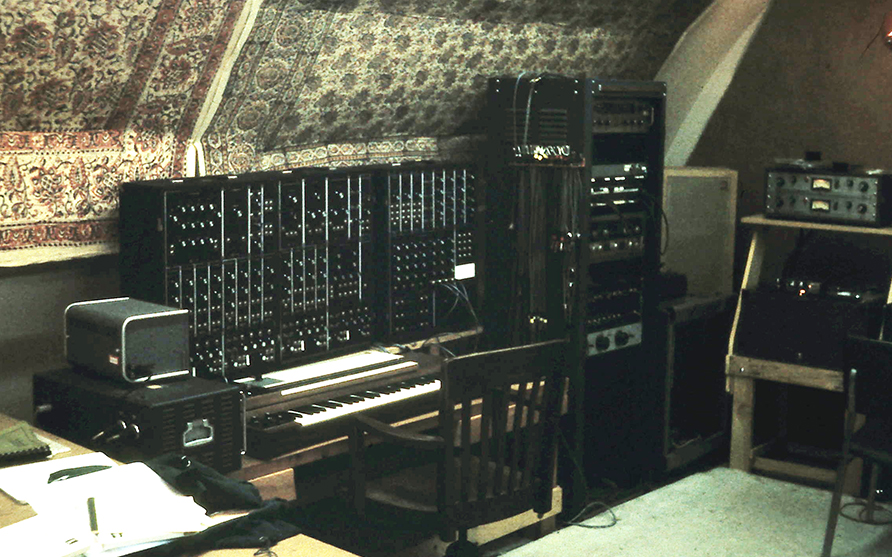
You started exploring the Moog back in the 60s, would you tell us how that happened? Not in Australia?
How were you first acquainted to Modular Synthesis?
In my senior year in high school, I went for an interview at the State University of New York at Albany. The interview was with Joel Chadabe, who had just acquired a small Moog model III for the studio there. I asked Joel, “What’s that?” and he said it was a Moog synthesizer. “Can I learn how to use that?” I asked. He said, “Sure, no problems, starting in Semester 2. But I warn you, kid, first one’s free.” We both had a good laugh at that – the idea that playing with a synthesizer could be totally addictive. Happily, for both of us, this turned out to be the case. I first started learning the Moog Model III (without a keyboard, but it did have a ribbon controller) and the classical studio equipment in what became the “small studio” at SUNYA.
Then, in 1970, when Albany acquired the CEMS system, the big multi-sequencer system of Moog modules designed by Joel Chadabe and Robert Moog, I graduated to that. One thing to emphasize is that these systems did not have keyboards, and they were not interfaced with the tape recorders by means of a traditional mixer. In fact, I didn’t begin working in a “proper studio” with a mixer interfacing tape recorders until I started my graduate studies at the University of California, San Diego in late 1971. One thing I’ve noticed in my years as an educator is that the system and the paradigm you first learn technology with generally sets the template by which you approach using technology for the rest of your life. So in the institution where I teach, students start off by working with Logic with a keyboard attached to it, and even by 3rd year, it then becomes enormously difficult to get them to approach using technology in any other way. Since my first learning of technology was with the “patching paradigm” I find that every other technological system I’ve used since then has been treated in this way. So even when working with systems like the Fairlight CMI or the Synclavier, I tended to treat them as just one more module in a larger system made up of a chain of systems. So working with a “systems concept” of composition, rather than a “specification concept” was “baked into” my consciousness at a very early stage.
And what do you think you can do with modular systems that you can’t do with other systems?
It’s not so much what you can do – although various modules may have unique capabilities (think of the Mutable Instruments modules, for example) – as it is the WAY OF THINKING that modular systems give you. The systems-oriented way of thought is inherent in patching modules together. Working with a DAW and a keyboard, not so much.
When did you buy your first system?
When I got to UCSD, there were two electronic music studios. One had a Moog Model III, this time with keyboard, and the other had a 12 panel, 4-sequencer Buchla Series 100 system, with four touch-sensitive keyboards which was specified by Robert Erickson.
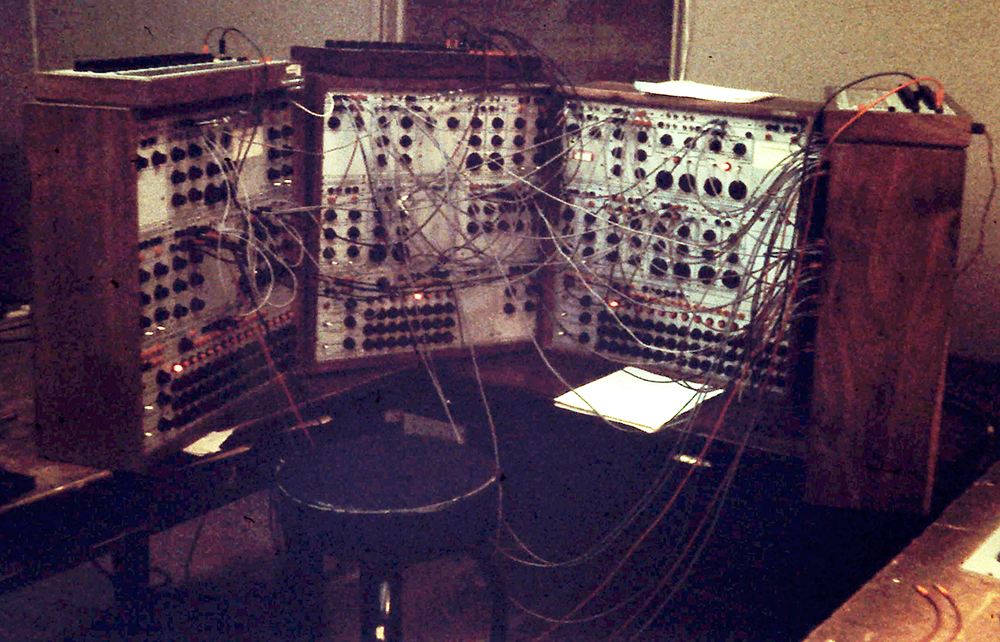
I pretty quickly gravitated to the Buchla System, and trying to recreate a “waveform assembly” patch that Joel Chadabe had devised (which produced a drone with elegantly changing timbre), made the first pieces in what became the Aardvarks IV series of pieces. The difference here was that I made two of these waveform assembly patches, and then used one to frequency modulate the other. This immediately produced wonderfully noisy waveforms which I proceeded to explore and enjoy. The Buchla had a two patch-cord system, and to make the patch, I had to make up a number of banana-jack-to-mini-jack chords so that the Buchla could function in the way I wanted. My teacher by this time was Kenneth Gaburo, who then encouraged me to start thinking about building/acquiring my own systems. There were two reasons for this – first, he pointed out that I probably wouldn’t be at an institution where I could have access to advanced systems forever, and second, that as a composer, I was also composing the system as well as composing the music, so if I wanted to have systems that were my creation, I should start making my own system. This work eventually resulted in me building Aardvarks IV, the electronic music box, which embodied my ideas of what kind of a system I would need to create the patches that I had originally developed on the Buchla. At the same time, (1973-74), I also became involved with the People’s Synthesizer Project of Serge Tcherepnin, and built a Serge system for the Center for Music Experiment as part of an analog studio that I developed for them.
What was the effect of that discovery on your compositional process?
On your existence?
Working with both Joel Chadabe, and then Kenneth Gaburo gave me a good grounding in the idea of composing as setting up a process, with the piece being produced by the rules of the process, occasionally with live interaction from me. Of course, we should also mention the influence of John Cage, and his process-oriented thinking as well. But it was the strong influence of Chadabe and Gaburo who set me along the path of “composing the system” in either a conceptual manner, or else in a designing or specifying hardware manner, and this way of thinking has pervaded almost everything I do, since then.
Would you please give a resumé of your musical activities from then on?
Since the late 70s, I’ve then also worked with most of the analog and digital systems that I managed to get access to. I composed with a borrowed VCS3 in 1973, as previously mentioned Moog and Buchla large systems ; and in 1978-80, I worked with Joel Chadabe’s Play 2D controlled Synclavier system. I also managed to get access to several studios which had Fairlight CMIs as well as continuing to develop my own analog systems. In 1977, in addition to the Serge system I had built for La Trobe University, I also built my own Serge modules, and in 1978, built Aardvarks VII, the box of counters/dividers, gates and unity-gain mixers that I could do just-intonation pitch sequences with. In the early 80s, I also bought an Aim-65 computer, and with a FORTH chip that Serge Tcherepnin gave me, proceeded to compose a number of pieces (under the general title of “Aardvarks IX”) that used the AIM in conjunction with the Serge modules, especially the Touch Controlled Keyboard Sequencer.
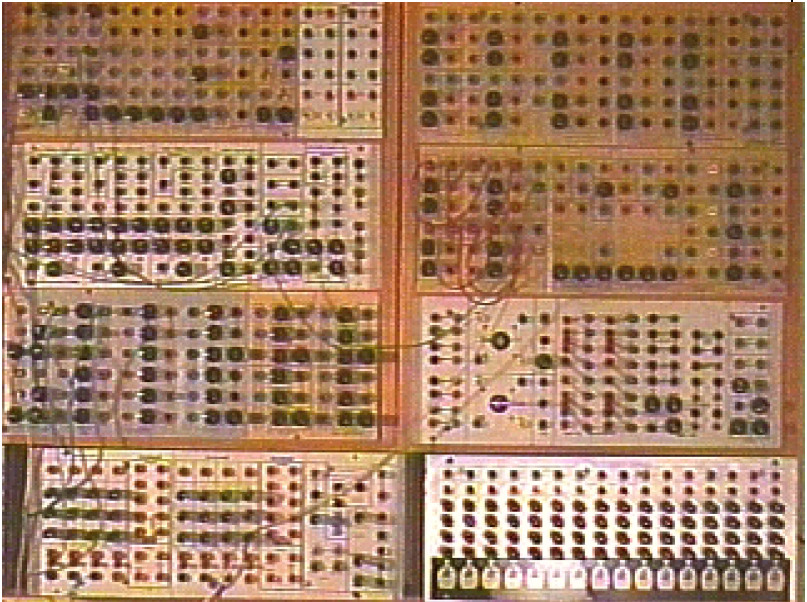
In 1986, I got a “real computer,” an IBM 286, and that year, I first made contact with John Dunn, who was designing algorithmic control systems for the PC platform. The first of these was called “Music Box” and it developed into a number of systems for MIDI control of analog or digital systems over the years, including Kinetic Music Machine (KMM), SoftStep, BankStep, and finally MusicWonk and ArtWonk. I begin working with John on the development of these around 1988, and worked with him steadily until his death in 2016. Again, the paradigm in using this program was patching, and the assembling of large self-controlling process-oriented patches.
Can you outline how you patched and performed your Modulisme session? Context, anecdotes from back then, etc…
Aside from what I mentioned above, the first patches, which you’ll hear in this session, were made with the large Buchla system at UCSD. A very high frequency oscillator drove a sequencer, the outputs of which turned on and off a set of gates. Into some of these gates, slowly changing control voltages were inserted. This made a waveform with a changing timbre as the slowly changing control voltages made parts of the wave vary over time. Then when you made two of these setups, and had the oscillator of one frequency modulate the other, wonderfully complex and semi-uncontrollable noisebands with changing timbre resulted.
As one could read in the intro Ron Robboy described the sense of excitement as he saw me driving the synthesizer in ways beyond what he thought it was designed to do. Many years later, using just the Aardvarks IV box with a smaller version of the waveform assembly and modulation patch, we installed the box on the cheese table at the Golden Hills Food Co-op in San Diego. This was part of an installation that I did in collaboration, again, with David Dunn and Ron Robboy, called “Three Music Boxes for the Golden Hills Food Co-op.” This was part of our work as a trio called YCMA, the Young California Minimalist Artists. The Aardvarks IV box serenading the cheeses was called “Along and Afloat Among the Cheeses.”
This cheesy quality is something that, like process oriented thinking, has remained an essential element of my artistic aesthetic ever since.
How come that you opted for a switch from Analog to digital, processing modular in a computer?
Was the Serge your favorite instrument? How does it compare with your digital in terms of sound?
I was, and remain, unambiguously promiscuous in my approach to technology, composition, performance, intonation, etc. Any technology will give me possibilities, if I can just take the time to understand it and see its potentials. And I also enjoy the unique timbral possibilities of each new technology that I encounter. This also applies to my work in making acoustic instruments, such as my set of just intonation tuning forks, or my work with restrung and retuned ukuleles and guitars, or my work with (Tom Nunn-inspired) electro-acoustic percussion boards.
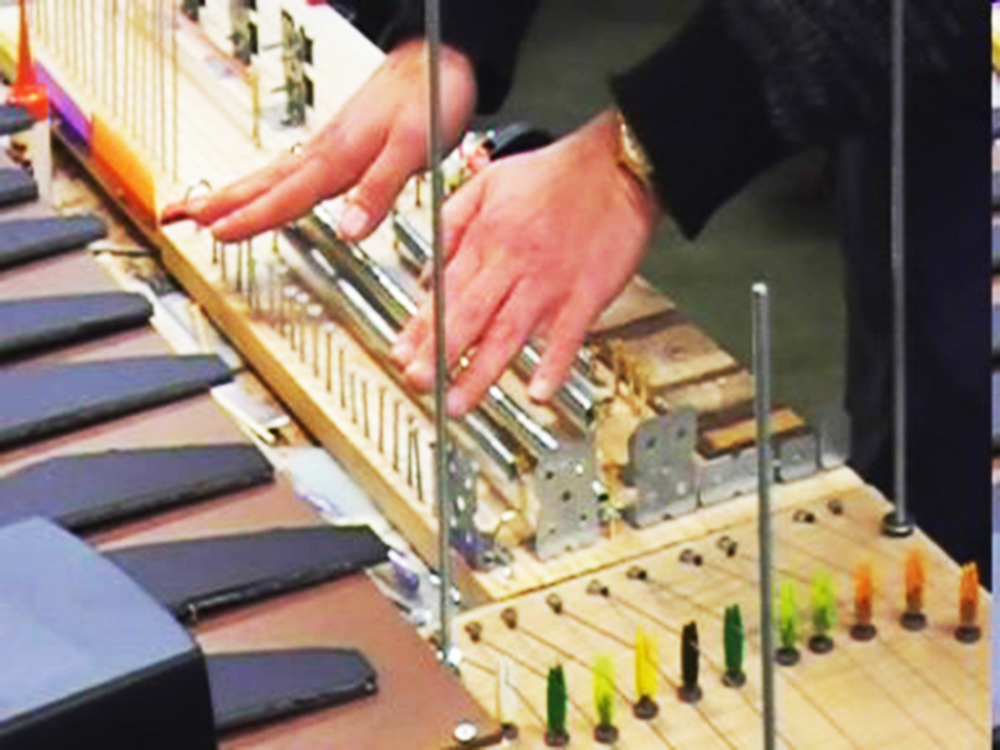
But around 1986, I made the switch to a more standard computer (while at the same time having much fun with a Casio SK1 and later SK5), and also acquired an AKAI S900 sampler. The Serge was the core of my system until the late 90s, but I also used so many other kinds of technology from lo-tech to high-tech. Also, in the late 90s, on my (by-then) PC laptop, I began working with the programs US, and Wigout, which were developments of Herbert Brun’s “Sawdust” programs, which did process-oriented waveform synthesis – this opened up further areas of noise-exploration for me. And in the early 2000s, I also began working with the Composers Desktop Project programs, which gave me further sound modifying possibilities, and which were also designed around a patching paradigm applied to a series of digital functions, rather than physical modules. What eventually drove me totally into the digital domain was convenience. After years of pushing around two large flight-cases full of analog and digital gear, I longed for portability. Finally, by the mid-90s, my setup consisted of a Buchla Lightning, a PC Laptop, and occasionally the AKAI sampler and an Emu Proteus. By 1998, with the advent of programs like Martin Fay’s Vaz Modular, I was able to take my process-oriented patching-paradigm method of composition totally into the laptop screen. “Five for the Coming of Spring” was a live dance-accompaniment played on the laptop (five pieces for five different dancers/choreographers) in which I played John Dunn’s MIDI programs which controlled patches in Vaz Modular. Also, my main platforms for work in the computer became AudioMulch and Plogue Bidule, both of which are patching paradigm programs (and not DAW oriented multi-track programs). So combining the MIDI patching abilities of MusicWonk with the patching abilities of AudioMulch and Plogue Bidule means that I have a very powerful patching-process system inside my computer. A commercial VST synthesizer or sampler then becomes just another module in this larger meta-system. Since then, I’ve wanted to get professional-level process-oriented composing systems on smaller and smaller, and cheaper and cheaper platforms. Now I’m mainly working with a PC computer and an iPad. My iPhone(s) are quite powerful, but mostly, I find I need more “screen real-estate” than they can provide for sustained composition.
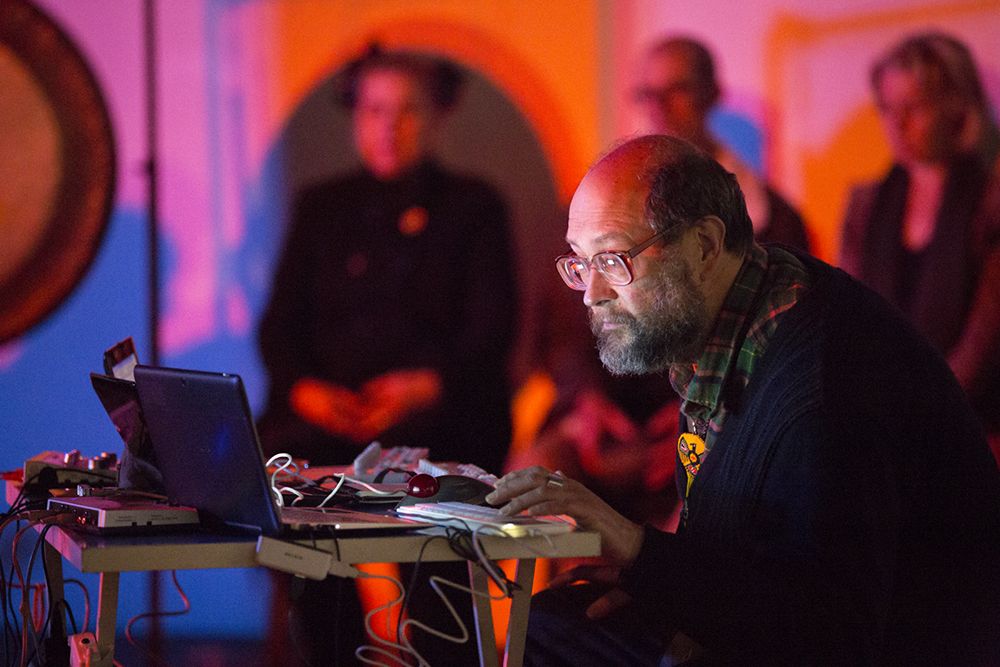
Quite often modularists are in need for more, their hunger for new modules is never satisfied? How do you explain that?
There’s always some unique quality, possibility, compositional potential in someone else’s system. If those possibilities excite you (as a process of continual learning and expansion of one’s musical horizons), then of course one is going to be excited by new modules. And there are so many people designing modules, both physical and virtual, these days, that there seems to be an almost infinitely expanding field of musical possibilities that continually present themselves. I’m not doctrinaire about any particular method of composing or any particular technology. As Pauline Oliveros once said to me, “Warren, I want it all!!!” and this seems to also sum up my attitude pretty precisely.
On your end I assume you are constantly adding some VCV Rack modules, changing your instrument? Instrument building may actually be quite compositional, defining your sonic palette, each new module enriching your vocabulary. Would you say that their choice and the way you build your systems can be an integral part of your compositional process? Or is this the other way round and you go after a new module because you want to be able to sound-design some of your ideas?
Yes, both. Sometimes I’m excited by the possibilities of a new module (a part of someone else’s musical brain that they have generously offered to us for further use), sometimes I’m after a particular sound result, and most often, the things go hand in hand, so it’s hard to say which desire comes first.
What would be the system you are dreaming of?
It’s got to have microtonal capabilities, and it should have lots of timbral abilities, and it should probably be pretty cheap and portable, and be able to be controlled and performed in real time.
Are you feeling close to some other contemporary Modularists?
Which ones?
Which pioneers in Modularism influenced you and why?
I very much like what Tom Djll and Bob Ostertag have done with the Serge and Madrona Systems Aalto in the past couple of decades. They both seem to get a lot out of working within the confines of a limited system. The work of John Bischoff also remains a continual source of inspiration as does the (non-modular) work of Trevor Wishart. Most recently, the new modular work of David Dunn has been a complete delight. When I was at UCSD from 1971-75, I was very inspired by the Buchla work of my fellow graduate students Ernie Morgan and Reinhard Berg. In 1973, Charlemagne Palestine introduced me to the “several oscillators slightly detuned to make a beating complex” idea. I’ve already mentioned Joel Chadabe, and Richard Teitelbaum’s work was also quite lovely. In the homemade electronics sphere both David Tudor and Stanley Lunetta were inspiring, and Salvatore Martirano’s “Sal-Mar Construction” was a crucial encounter for me. Of course, Pauline Oliveros was a beacon throughout her long and productive life. There are/were dozens of others, not all of which were working with modular systems. For example, I don’t think my composing life would be complete without the compositional linguistics of Chris Mann, who I worked with intensely from 1974 until 1998, and the sound-sculpture work of Ernie Althoff remains a continual source of inspiration to this day. Ernie is often doing with physical objects what I’m trying to do with electronic circuitry.
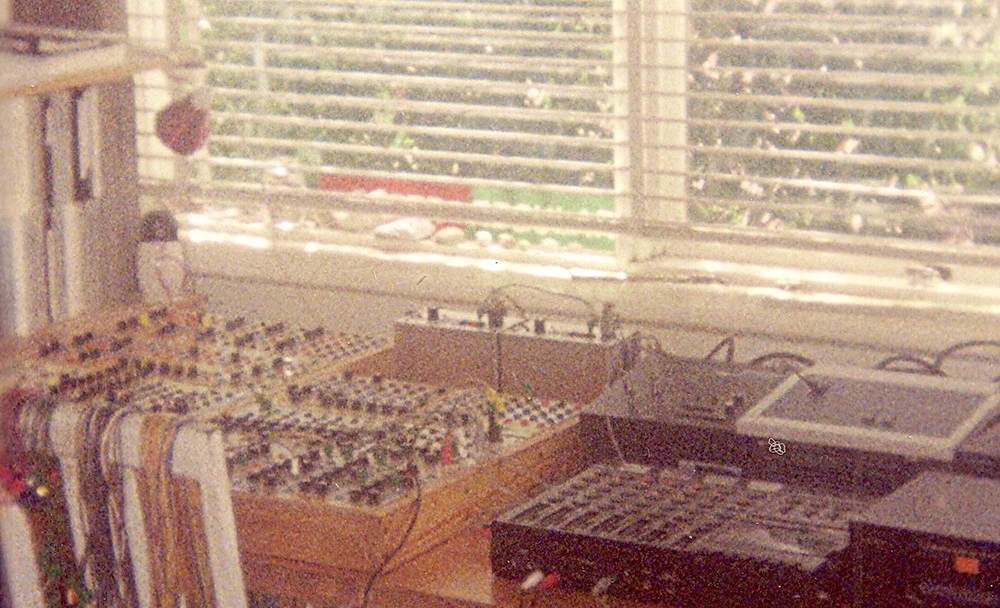
What have you been working on lately, and do you have any upcoming releases or performances?
No performances scheduled – not only the plague, but we live in a fairly remote mountain village pretty far from Melbourne. But on my website, I’m continually posting new and latest work using various electronic and other systems. Check that out to see what I’m up to currently.
Any advice you could share for those willing to start or develop their “Modulisme” ?
First off, read the manual. Think deeply about the abilities and the structure of each new module in your system. Don’t be limited by anyone else’s notion of what a “proper” sound or structure could/would/should be, and don’t be limited by your own ideas of “good taste” either. Don’t be afraid to combine things that normally shouldn’t go together. Build up the knowledge of your system gradually, module by module. Then you’ll have a firm basis on which to start intuitively combining things.
Above all, have fun. The verb is “playing” music, remember.
Have fun in the playground of sound, technology and ideas.

